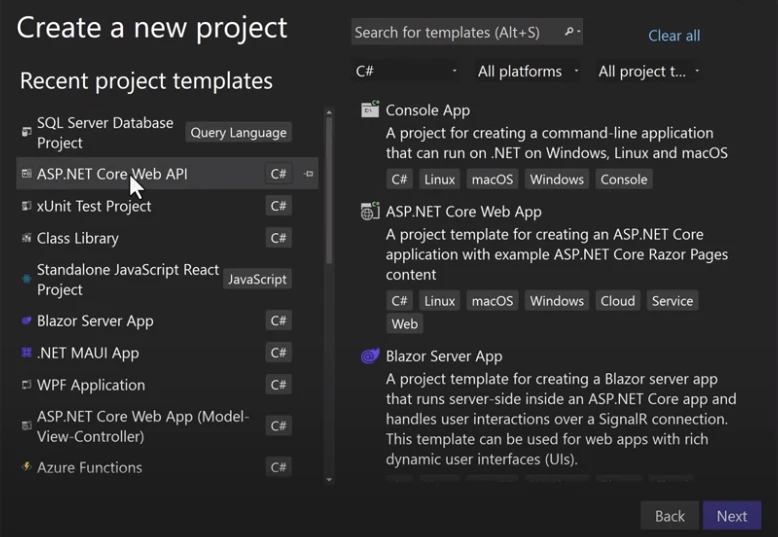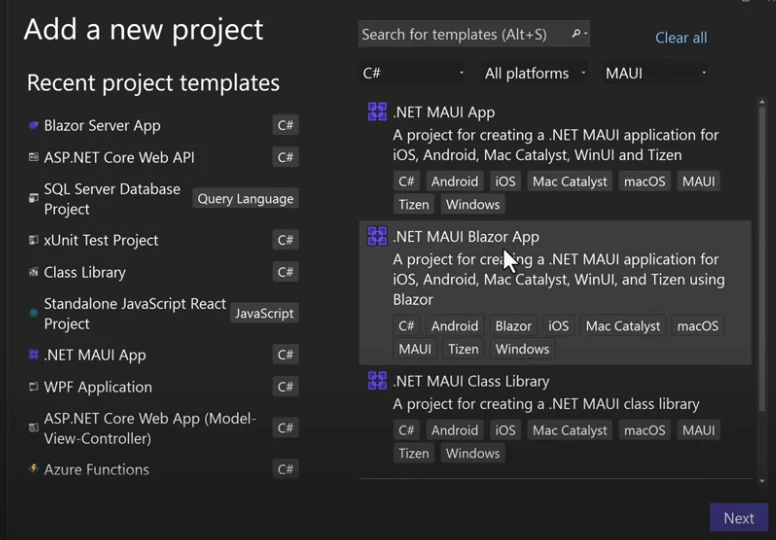Exploring Key C# Framework for Full Stack Development
Becoming a full stack developer in C# involves mastering various tools, languages, and frameworks to create sophisticated, cross-platform applications that meet diverse business needs. In his insightful video on "How Do I Become a Full Stack Developer in C#," Tim Corey provides a roadmap for aspiring developers, highlighting essential C# frameworks and tools. This article draws from his video, explaining the crucial frameworks and tools he discusses to make an informed decision on choosing the right C# Framework for development. To follow along with Tim Corey's advice, you can refer to the timestamps provided for each section.
Introduction
The C# framework, a cornerstone of modern software development, operates seamlessly within the .NET Framework ecosystem. Utilizing the Common Language Runtime (CLR), it supports multiple programming languages and fosters robust, object-oriented programming. This ensures that .NET applications can run efficiently across various operating systems. Integrated with Visual Studio, the C# framework provides a comprehensive environment for developing high-performance, scalable, and versatile solutions.
.NET languages offer developers a diverse toolkit for building and running applications across various operating systems. With the .NET platform's Framework Class Library (FCL), developers can leverage a rich set of pre-built functionality to streamline application development. This capability extends beyond traditional desktop applications by enabling the creation of cross-platform desktop applications that run seamlessly on Windows, macOS, and Linux. By compiling to native code or utilizing native machine code where necessary, .NET applications achieve optimal performance and platform integration. This versatility makes .NET languages like C# and Visual Basic indispensable for modern software development across diverse operating environments.
1. Learning C# Deeply
Tim Corey emphasizes the importance of mastering the C# programming language as the first step. Whether you aim to be a front-end, back-end, or full stack developer, a deep understanding of C# is crucial. Tim notes that learning C# thoroughly forms the foundation of your skill set for working with C# frameworks built in object-oriented programming languages. This includes familiarizing yourself with core concepts, language syntax, and best practices. Start by building simple applications and gradually move on to more complex object-oriented projects.
2. Understanding API Development
A key aspect of full stack development, as highlighted by Tim Corey, is knowing how to create and manage APIs. APIs (Application Programming Interfaces) are essential for connecting the front end and back end of applications, as well as integrating with third-party services.

Tim, at 2:51, points out that mastering API project types in C# will enable you to support various application types, including:
- Mobile applications
- Client-side web applications
- Desktop applications
- Microservices
By focusing on APIs, you can ensure a consistent backend for multiple front-end applications, making your development process more efficient.
3. Exploring Blazor
Blazor is a powerful framework for building interactive web applications using C#, and Tim Corey recommends it for full stack developers. Blazor offers two hosting models: Blazor Server and Blazor WebAssembly.

Tim recommends learning Blazor at 4:16, allowing you to cover the entire web development spectrum:
- Blazor Server: Provides server-side rendering, enhancing performance and security.
- Blazor WebAssembly: Runs client-side in the browser using WebAssembly, allowing for rich interactive experiences.
At 4:45, Tim says Blazor is particularly valuable because it shares syntax and components across web, mobile, and desktop applications. This means you can use the same knowledge and codebase to create applications for different platforms.
4. Embracing Blazor Hybrid and .NET MAUI
Blazor Hybrid and .NET Multi-platform App UI (MAUI) extend the capabilities of Blazor by enabling you to build native mobile and desktop applications. Tim Corey explains that with Blazor Hybrid, you can create apps that run on Windows, macOS, iOS, and Android using a single codebase. This approach simplifies development and maintenance of mobile apps while offering a seamless user experience across platforms.

Tim Corey explains that Blazor is a versatile framework, providing a shortcut for developing mobile native applications and desktop applications on both Windows and Mac. At the (5:24) mark, he demonstrates the similarities in the code structure between Blazor server pages and Blazor hybrid pages. Both pages, like the counter page, appear almost identical, emphasizing the streamlined development process. This consistency in syntax and managed code structure enables developers to efficiently create web applications, including Progressive Web Applications (PWAs) for offline use. By mastering Blazor, developers can leverage a unified codebase to build a wide array of applications across multiple platforms.
5. Expanding Knowledge to Microservices and Azure Functions
Microservices architecture involves building small, independently deployable services that work together. Tim Corey suggests that C# developers often use minimal APIs or Azure Functions to implement microservices. Azure Functions, particularly with HTTP triggers, act as lightweight APIs and are integral in microservices architectures.
6. Working with Framework Class Libraries
Class libraries are reusable components that encapsulate logic, making your code modular and maintainable. Tim Corey stresses the importance of understanding how to create and use class libraries, which is essential for both backend and full stack development. Class libraries support your API, Blazor, and other projects by providing shared functionality.
Conclusion
By focusing on these key features, frameworks, and .NET platform technologies, you can streamline your path to becoming a full stack developer in C#. Start with a solid foundation in C#, master API development, and then branch out to Blazor for web applications. Embrace Blazor Hybrid and .NET MAUI for cross-platform development, and incorporate class libraries to keep your code modular. Finally, explore microservices and Azure Functions to expand your capabilities.
Tim Corey encourages continuous learning and taking on challenges to improve your skills. By following this approach, you'll not only become a proficient full stack developer but also open doors to various opportunities in the software development field. For more detailed guidance, refer to Tim Corey's video and take advantage of the resources available on his YouTube Channel.












